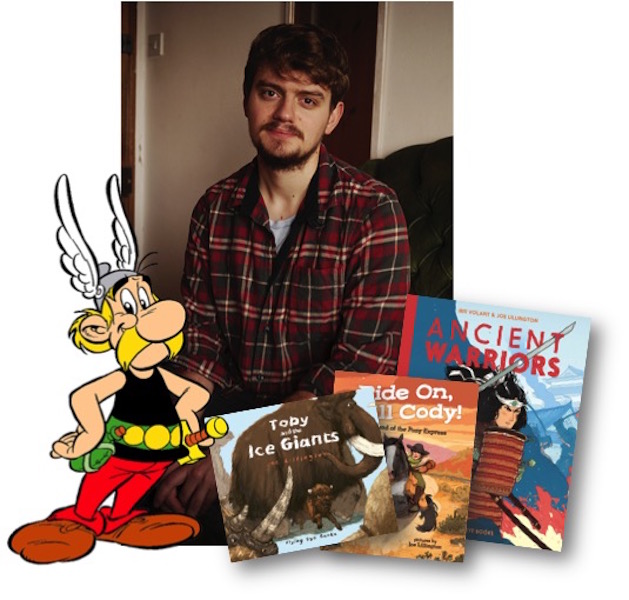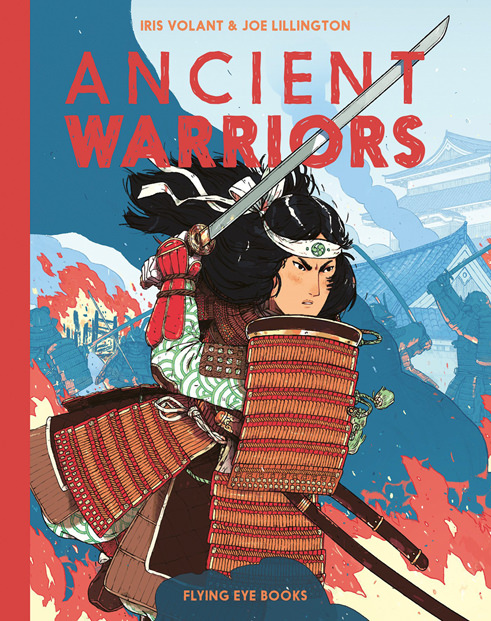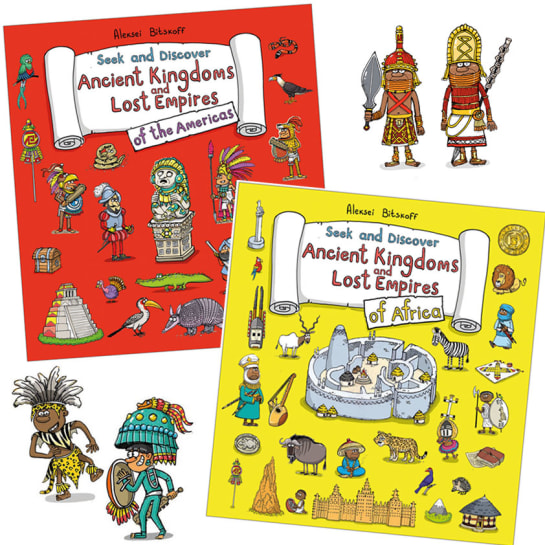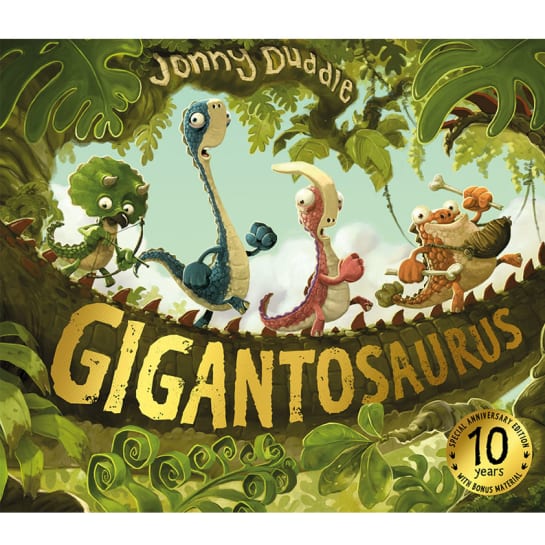Joe Lillington has been represented by Arena Illustration for two years and in that time has emerged as a go-to illustrator for historical non-fiction publications for children.
The influence of Medieval manuscripts on Joe’s recent work is evident in the detail and depiction of figures and landscapes, often drawing reference from the work of Pieter Bruegel who’s work he greatly admires, Joe’s illustrative style has equally been shaped by his childhood love of the Asterix graphic novels by Rene Goscinny and Albert Uderzo which first triggered his love for history, characterisation and strong narrative.
His forthcoming book Ancient Warriors created in collaboration with Iris Volant and published by Flying Eye Books hits the shelves on the 7th August. We took some time out to get a creative insight in to the way in which Joe works and where he finds inspiration.


INTERVIEW:
ARENA: Your work heavily references periods in ancient history, accurately recreating environments, fashions, weaponry and scenes from everyday life, how important is reference development work for non-fiction books? And do you spend time visiting museums and galleries sketching?
JOE: Reference is definitely very important when working on non fiction because you are always aiming the be as accurate with what you are depicting as you can. However it is time consuming and with some facts are still debated so it can be tricky to get things right, also, depending on the project, you only have a certain amount of time to spend of research so you just have to do as much as you can.
I try to draw a lot from museums and I do take a lot of photos, but it can be hard to find the exact reference you need and again, with time restrictions, books and the internet are also a really useful resource.
ARENA: Is there a particular period in history which you are particularly drawn to and why?
JOE: I find the early medieval period interesting because you’ve got the end of the Roman Empire and then the beginning of the Middle Ages. With the fading Roman influence and lots of smaller Kingdoms, I think that it’s a fun time to set adventures and can lend itself to a lot of atmospheric settings.
ARENA: Are there any periods in history which you think would make an amazing children’s book but which hasn’t been fully explored yet?
JOE: I think something pre history where modern humans and Neanderthals were around at the same time would be really interesting but difficult as there’s not a lot of concrete information about what it was like!
ARENA: Tell us a bit about your daily work routine and do you have any tips for how newly graduated illustrators can utilise social media platforms to promote their work?
JOE: I start with emails and checking what work I want to get finished that day. Then do a few hours work, when I feel I need to take a break then I take the dog for walk, then usually work through afternoon and sometimes evening until I’ve got what I needed to done. I also aim to do a little social media everyday but I don’t always manage!
ARENA: Tell us about your proudest career moment so far?
JOE: I feel proud of my new book Ancient Warriors because it is definitely the longest and biggest project I’ve done so far. It took a lot of work over many months to complete so it’s really nice to have it finished and produced so beautifully by Flying Eye.
ARENA: Ancient Warriors publishes with Flying Eye Books in August featuring famous battles, weapons and great leaders from various periods in history, Was is there a spread which you are particularly proud of and perhaps one which you found tricky to get just right?
JOE: The Shaolin monks spread is my favourite. I’m really pleased with the two central figures and I think the surrounding composition also works well showing the battle and setting the scene. I think this time period in China is really exciting visually so it was a fun one to work on. This spread also went through a couple of different colour versions and so it’s satisfying seeing it finally finished and in print!
ARENA: Tell us about three illustrators you follow on Instagram that we should keep an eye out for?
JOE: I really love the work of Linnea Sterte whose recent book Stages of Rot was beautiful. I like Alexis Deacon’s Instagram because his work is great and he also posts sketches and works in progress which I love to see as they help you understand his way of working and thought processes. I’m also a big fan of Sam Bosma’s work and books and again he posts works in progress to Instagram which are really interesting.
ARENA: What was the best piece of advice you were given as an illustration student and what useful piece of advice would you give new graduates?
JOE: I remember someone saying to try and have five or six different ideas for projects or stories at different stages of development on the go at the same time. That way, you can dip in and out of each, depending on what you are doing with other work at the time. I think that that many is something great to aim for. It’s good to be developing your own projects as you never know what opportunities might arise for different things at any time.
My advice would echo that and also just to keep drawing a lot because even after a day or two not drawing you can feel out of practice. Just by doodling and sketching you will generate the ideas you want to develop.
View Joe Lillington’s updated portfolio HERE, For creative insights and sneak peeks follow Joe on Instagram HERE and pre-order a copy of Ancient Warriors HERE



